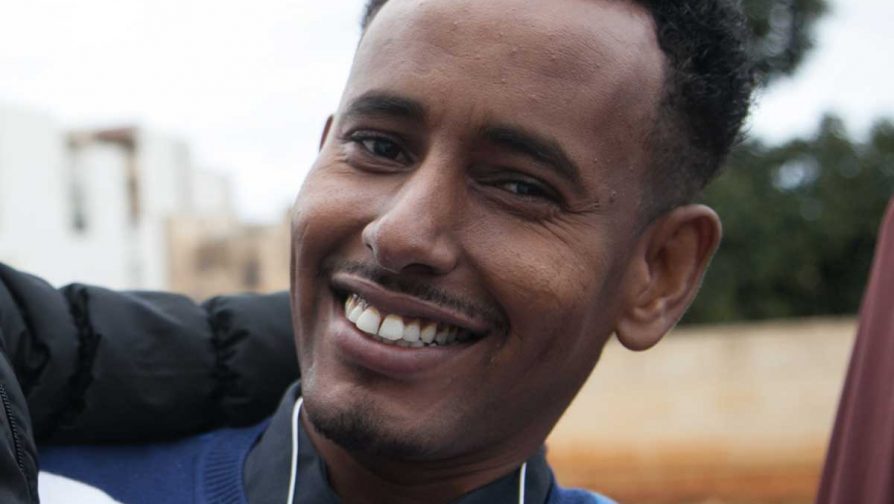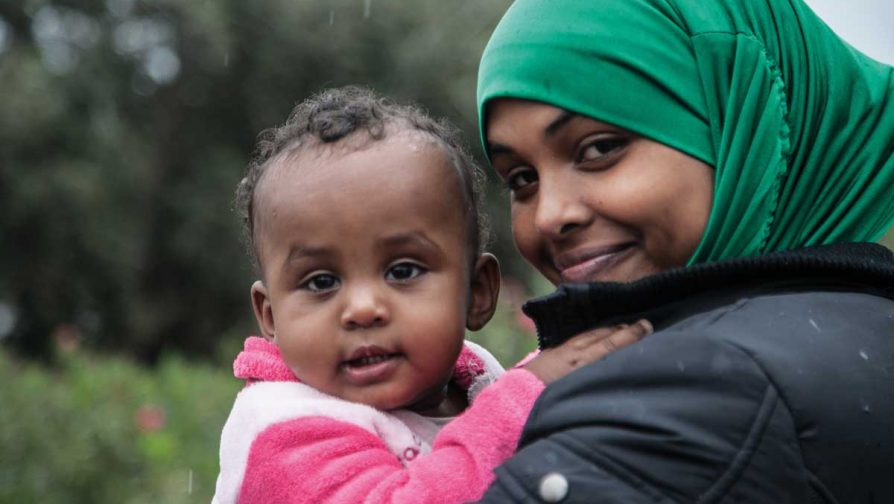A short report from our magazine on the situation of refugees in Gozo, including perspectives of refugees and members of the Gozitan community.
Mgarr Harbour, Gozo
UNHCR carried out outreach activities and meetings with relevant mainstream stakeholders in Gozo, with the aim of better understanding the integration prospects of refugees living in Gozo and the available services there. The Gozo Outreach Initiative started out in April 2016 and is still underway.
From these activities UNHCR identified that refugees and beneficiaries of international protection living in Gozo lack information and integration support. Consequently, refugees are struggling to access services which could help in their inclusion in Gozitan society. If unaddressed, in the long term this could have a negative impact not only on the refugee communities but also on the general population of Gozo.
Towards the end of July 2016, UNHCR, the President’s Foundation for the Well-Being of Society (President’s Foundation), and some Gozitan stakeholders agreed to embark on a 9-month strategy, commencing in September 2016 up to June 2017.
The strategy focused on two pillars – a mapping of the services carried out by two cultural mediators available in Gozo and an identification of refugees’ needs, done through a number of Refugee Consultation sessions.
From the sessions it was revealed that the Somali community seem to be the group facing most social, educational, and employment problems, resulting in them becoming idle and/or unable to integrate in the local community.
The lack of a structured system providing adequate support services to refugees living in Gozo is strongly felt, and major gaps in the system remain unaddressed. There is a fragmented and unstructured support system being provided, mainly by Church institutions such as Caritas which offer material support such as providing milk, food and other material needs to refugees registered with them.
General lack of awareness and knowledge about refugees seems to give rise to misconceptions which in turn create barriers to social inclusion. The involvement of local councils, authorities and refugees working together would be able to bridge some of the current challenges faced by both refugees and communities.
The report was presented to Justyne Caruana, Minister for Gozo, in July 2017.
The project will now continue to advocate with the relevant stakeholders for the necessary support which is much needed by the refugees living in Gozo. It is foreseen that this will be done in a collaborative manner between UNHCR, the Ministry of Gozo, the President’s Foundation, and the relevant Gozitan stakeholders.
***
Over the last four years UNHCR has been closely following the refugee and migrant community living in Gozo. Apart from carrying out a mapping of refugee needs and services provided, UNHCR has identified and implemented a Refugee Focal Point (RFP) system. Six refugee focal points are currently being trained and supported to assist their community.
The RFP system in Gozo could potentially improve the gap between the refugee community and service providers. Read more about the Refugee Focal Point Programme in Gozo: Refugees in Gozo volunteer to support their community
***
UNHCR Malta regularly meets with refugees living in Gozo to learn about their situation. Read about Ahmed and Hodon below.

Ahmed, a 23-year-old graphic designer, did not choose to end up in Gozo.
“My journey started from Somalia in 1991 at the start of the civil war. Since then I have been running. I am still running. This is my reality. I am always looking for a better place, a place where I can have a good future.”
While Ahmed feels lucky to be alive, and to have found protection and peace in another country, he admits that many other refugees like him face a number of challenges in Malta and Gozo. “In Somalia we were faced with war. Here we are faced with other issues, such as racism and xenophobia,” explains Ahmed.
However, Ahmed admits that his biggest challenge in Malta is that he lives without a sense of certainty. “Even if we work and pay taxes in Malta, we will probably never receive a pension, or be granted citizenship. We cannot even dream about buying a house. There is no guarantee here. That is why many of us feel like we have not finished our journey.”
Ahmed believes that one way to overcome these challenges is to open dialogue between the Maltese and refugees. “It is time for locals and refugees to start communicating with one another. Even though we have been living side by side for years, people’s impressions are still formed by the media. There are lots of misconceptions,” Ahmed explains. “We need to organise meetings with the local communities and let them know who we are, and that we are here to help make their communities better.”
Like others, Ahmed highlighted that adult education is key to bridging the two communities. “How can people communicate if they do not speak the same language? How can people work if they do not learn the language? Refugees living in Gozo do not even have access to that,” says Ahmed.

Hodon, refugee and single mother living in Gozo. © UNHCR
Hodon moved to Gozo a few months ago. She is a single mother of a large family, and could no longer afford to pay rent in Malta.
“I am happy in Gozo. The people here are good. We have not been facing major problems as we were before in Malta.” – Hodon
Refugee mothers like Hodon do not know who to approach, apart from Caritas Gozo, when asking for assistance, particularly with regards to information on educational and employment opportunities. “We want to work. We really need to work. And we want to get educated,” she explains.
***
Although the population of Gozo is very small, some members of the local community are reaching out to refugees, supporting them as well as raising awareness about their needs. UNHCR Malta spoke to Fr. Michael Borg (Head of Caritas, Gozo) and Mario George Attard (Installation Artist).

Fr Michael Borg, Head of Caritas, Gozo.
Caritas Gozo opens its doors and offers its services to families in need of basic necessities, such as food, nappies, and milk. “We offer our services to all those in need, regardless of where they come from,” explains Fr Michael Borg, Head of Caritas in Gozo, which is located at the Curia in Victoria.
Over the years, Gozo has seen an increasing number of families settling there, including refugee women and children, Fr Michael reveals. “Families are leaving Malta because it is becoming increasingly expensive to live there. Even if people work, they find it more and more difficult to pay rent and support their families.”
Fr Michael admits that there is a lack of services being offered to refugees living in Gozo: “While charity is beautiful, we also need services that empower people,” he explains. “If we do not empower them, exploitation and unemployment will continue to grow. This will lead to idleness, drinking and violence. These are all signs of poverty and frustration.”

George Mario Attard, Installation Artist
George creates installations which foster dialogue and interaction between local and migrant communities. His project, ‘Migrating to Europe’, explores how art can contribute to a humanitarian cause, at a time when the death toll of migrants perishing in the Mediterranean is at an all-time high.
What inspires George to tackle this topic through his work? “One day while on a remote beach in Gozo, I started observing a number of items that had been washed-up on the sea shore. At first, I thought it was litter, but then I started noticing personal objects. It then occurred to me these items could have easily been brought in by a current from a tragedy,” he explains.
The story of Alan Kurdi, a three year old Syrian boy of Kurdish ethnic background who drowned in September 2015, whose image made global headlines, further inspired George to explore this topic through his art. “I believe that artists have an important role in our society, and have a responsibility to explore and communicate important topics,” says George.
For this project, George uses a very distinct medium: second hand clothes. “I always approach a subject with a tabula rasa – I start my research from there. This is what guides me to my medium of choice. I chose second hand clothes because it creates a bridge between the local community and migrants. All the clothes that I collect for the project are then donated to people. In this way, I create a temporary happening and expression,” explains George.
George exhibits his work in public spaces, as he believes that this is where dialogue needs to be created. “Art does not necessarily have to take place in a conventional space. With my installations, you don’t need a formal invitation to witness and interact with it.”
This article originally appeared in Moving Forward – UNHCR Malta Magazine, 2018.
Share on Facebook Share on Twitter